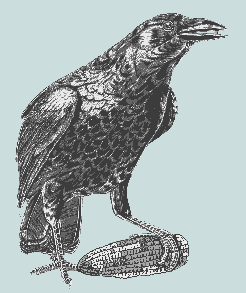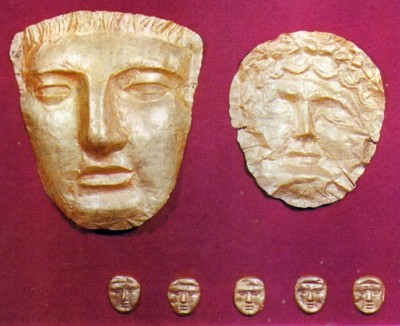

|
|
|
|
 Many ancient peoples have left us traditions of art and culture: mighty monuments,
elaborately decorated, attest their interests and ability; scrolls, preserved by
dry climates, contain detailed written records of their thoughts and ideas, their
literature and their religion. From the Phoenicians and the Carthaginians no such
legacy has come, and one reason is that their energies were devoted largely to
trade and manufacturing.
Many ancient peoples have left us traditions of art and culture: mighty monuments,
elaborately decorated, attest their interests and ability; scrolls, preserved by
dry climates, contain detailed written records of their thoughts and ideas, their
literature and their religion. From the Phoenicians and the Carthaginians no such
legacy has come, and one reason is that their energies were devoted largely to
trade and manufacturing.
Theirs was a commercial pattern of society which afforded little time for artistic achievement. For example, their position on a narrow strip of fertile coast meant that expansion was easiest by sea; they had timber for shipbuilding and for export and their trading acumen was highly developed. Commerce and colonization became their main activities. Finally, such architectural and written achievements as they had were almost entirely destroyed, as warrior peoples greedy for their wealth swept over them.
The Canaanites were a Semitic race and came to the strip of land we know today as Palestine, Israel, Lebanon and the coastal part of Syria, from the area of either Arabia or the Persian Gulf. Unlike most ancient peoples, they were not primarily farmers, but already from the beginning of their known history, some time after 2900 BC, city dwellers and sailors. As sailors the Canaanites of the coastal strip are better known by the name the Greeks gave them: Phoenicians. This name may have come from the Greek word phoinos (blood red). Probably the Greeks called the Phoenicians 'red men' either because of their sea-swept, ruddy complexions, or because only they provided the 'Tyrian purple' - the red-purple dye praised and prized through the ancient world.
Possibly the Phoenicians first launched their rafts and boats into the Mediterranean in search of food for an expanding population. Their land, though fertile, was tiny, but the sea was rich in fish.
Navigation |
||
|
|
Introduction | The Phoenicians |
|
|
Page 2 | Fortified Cities |
|
|
Page 3 | Dido and the ox hide |
|
|
Page 4 | A terrible religion |
|
|
Page 5 | Sacrifices to Tanit |